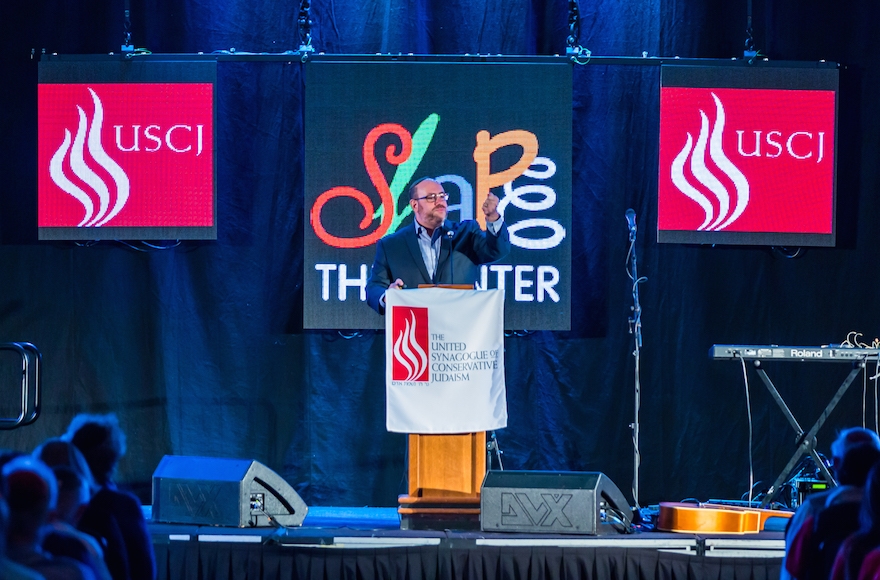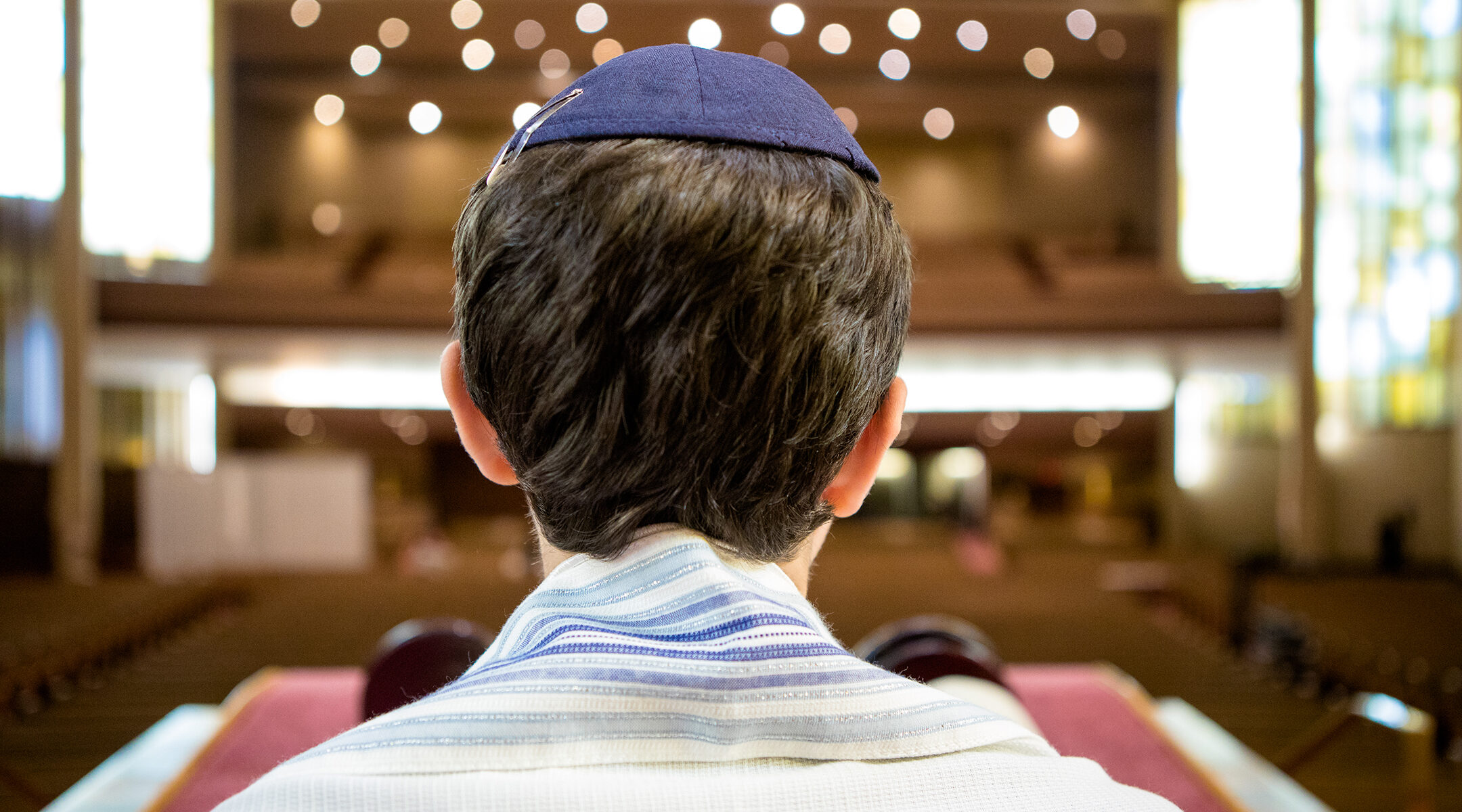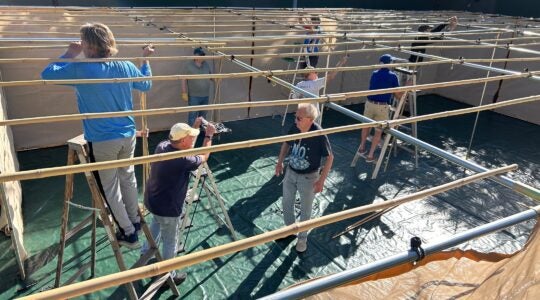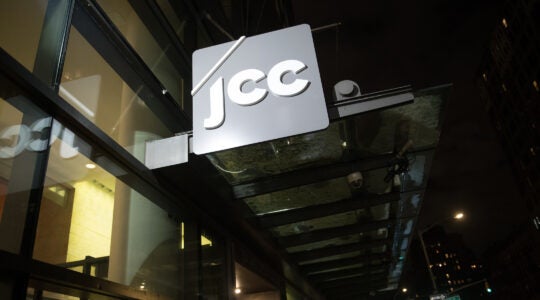This article was produced as part of JTA’s Teen Journalism Fellowship, a program that works with Jewish teens around the world to report on issues that affect their lives.
TORONTO (JTA) — At a time of declining synagogue affiliation rates and following a pandemic slump, one of North America’s largest Conservative congregations gained 900 new members in just eight months.
Launched in July 2022, an initiative called the Generations Membership Program attracted young families to Beth Tzedec Congregation here by removing membership dues for anyone under the age of 40.
The success of the no-dues model surprised leaders of the synagogue, whose next challenge is to strengthen the connections between the new members and the congregation.
“We were all surprised by how much uptake there was,” said Yacov Fruchter, the synagogue’s director of Community Building and Spiritual Engagement.
With over 4,000 members before the surge, Beth Tzedec was one of the largest Conservative congregations in North America. However, over the past decade, Beth Tzedec has suffered from a decline that has affected the Conservative movement, once North American Judaism’s largest denomination. In 1971, 832 congregations identified with the movement, a number which dropped to 562 by 2020. The number of Conservative Jews also dropped from 1.6 million at its peak to a half million by 2020, according to data from the 2020 Pew Research Center survey of U.S. Jews.
The decline of the Conservative movement left Beth Tzedec struggling to attract new members while old families fell out of touch with the congregation. “Ten years ago, our membership was at 2,400 households, but I think that number was inflated,” said Rabbi Steven Wernick, its senior rabbi. “Into the pandemic, we saw membership drop to 1,700-1,800 paying units,” or families. That’s a decline of approximately 25% over the 2010s.
As director of education, Daniel Silverman oversees Beth Tzedec’s congregational school as well as bar/bat mitzvah educational programs. Silverman said that it was difficult to attract and maintain younger congregants due to shifting cultural perspectives and financial stresses that have worsened over recent years.
“It was hard to help people understand that synagogue was worth their time when we put up a relatively high [financial] barrier,” said Silverman. “People of this generation are not going to be inclined to join and pay money to join a synagogue in the way that their parents and grandparents were.”
Beth Tzedec’s membership dues are adjusted for each family unit depending on how much the family can pay. That doesn’t mean that membership is cheap, however. For the highest-earning members of the congregation, dues can be up to $6,000 annually per family.
Ariel Weinberg, 17, belongs to Beth Tzedec and participated in Silverman’s bat mitzvah educational program. When she becomes an adult, she said she would be happy to pay a portion of her salary for synagogue membership but wants her experience to be more than simply attending for the High Holidays.
“That’s a lot of money to put forth every month when I only use it twice per year,” Weinberg said.
Voluntary dues programs like Beth Tzedec’s have been growing in recent years. Synagogues adopting the model cite research showing that potential members see belonging to a synagogue as less of an obligation and instead want to be shown what a synagogue has to offer, as Rabbis Kerry Olitzky and Avi Olitzky argued in their 2015 book on membership models.
Wernick said that the way younger generations view synagogue membership is fundamentally different from previous generations.
“The traditional synagogue membership model was pay first and engage later. So what we decided to do was, engage first, and then we’ll talk about money later,” Wernick said.
Boosting membership on paper is one thing; creating active, engaged members who show up for worship and take part in programming is another. To demonstrate Beth Tzedec’s commitment to engaging the new cohort, the shul recently hired an engagement specialist and the board is also in the process of hiring a new cantor or rabbi. Leadership has also committed to meeting one-on-one for a “coffee date” with each new member of the congregation to strengthen new connections.
“The goal is to make a place as large as Beth Tzedec feel small and personal,” said Silverman.
Leadership’s attempts to better connect with congregants have already resonated well with new members. After Rebbecca Starkman and her family joined Beth Tzedec in September 2022, her husband met with Wernick as part of the “coffee date” initiative.
“He really, really enjoyed it,” said Starkman. “It also made him feel connected, connected and comfortable.”
When Wernick became Beth Tzedec’s chief rabbi in 2019, he set out to address Beth Tzedec’s membership woes. As the former CEO of the United Synagogue of Conservative Judaism, the congregational arm of Conservative Judaism, he used his expertise to devise a plan that would reverse the previous trend in Beth Tzedec’s affiliation.
“What I attempted to do at USCJ was to help synagogues reinvent themselves for the 21st century,” Wernick said.
Part of that idea, said Beth Tzedec’s president, Patti Rotman, meant rethinking the congregation’s membership model. “It couldn’t just be transactional. It had to be transformational,” Rotman said.
Prior to the implementation of the Generations program, Beth Tzedec had attempted strategies to improve engagement. Previously, membership for families under the age of 25 was set at only $50 per year. The congregation was able to support this program as membership dues only accounted for 30% of operating income, the rest coming from other sources.
According to Wernick, as of 2022, only 5% of Beth Tzedec’s operating income came from families under 40. As such, the switch to no-fee membership for the under-40 cohort did not cause a significant financial impact.
“So you already had a circumstance where those over 40 were already paying for those under 40,” Wernick said.
In the months prior to the implementation of the Generations Membership Program, Beth Tzedec undertook a significant amount of research into synagogue engagement in Toronto. Based on the 2018 Environics Survey of Jews in Canada, they learned that 70% of Jewish Canadians belonged to a congregation, more than double the percentage in the U.S.
“If there’s 200,000 Jews in the GTA [Greater Toronto Area], then 30% are not affiliated,” said Wernick, “and then if you break it down by how many people are in their 20s and 30s, we’re talking about 16,000 Jews.” Out of the 16,000, Wernick estimates that approximately 30% grew up as part of the Conservative movement, while 30% grew up unaffiliated.
Geographic research told Wernick that prior to July 2022, there were around 500 households in the vicinity of Beth Tzedec in need of a shul.

Rabbi Steven Wernick, senior rabbi of Beth Tzedec in Toronto, previously served as CEO of the United Synagogue of Conservative Judaism. (Courtesy of USCJ)
Beth Tzedec was able to focus its social media campaigns on neighborhoods with the greatest concentration of young and unaffiliated Jews in the vicinity.
“We targeted the unaffiliated, we targeted the previously affiliated to Beth Tzedec, but who had dropped off for more than three years, and we targeted based on geography,” as well as the study by Environics and information from UJA-Federation of Greater Toronto.
Even with the sophisticated marketing campaign, Wernick said that the synagogue expected it would only gain around 20-50 new households per year.
“Just because you give it away for free doesn’t mean that people are going to come,” said Wernick.
By the end of the first day of advertising, 50 new families had signed up.
“We are well over 420 new households,” Wernick said. Seventy-five percent of the uptake are brand-new members while the remainder are former Beth Tzedec members who had fallen out of the fold for more than three years.
The 420 household figure represents mainly families, as well as couples and individuals. Beth Tzedec President, Patti Rotman, estimates that approximately 900 new individual members became part of the synagogue in the eight months since the program was inaugurated.
When it comes to reinvigorating community life, gaining new members is not the only task at hand.
The membership drive “is only mile one of a marathon,” said Silverman.
“The most difficult part is, how do you then keep people connected?” said Fruchter. “You have to have the capacity to develop the relationships that you are starting.”
As self-identified Modern Orthodox Jews, Rebecca Starkman and her family attend synagogue regularly. Because her primary congregation only meets every other week, Starkman had been attending Beth Tzedec for years prior to joining under the Generations program.
“I had been attending loosely since 2015,” said Starkman. “We had always been members at this other congregation but had not joined Beth Tzedec until this past September.”
Starkman said that it was the financial barrier that had been preventing her and her family from officially joining Beth Tzedec.
“We didn’t feel like we had enough finances to pay membership at two organizations,” said Starkman. “The program definitely gave us the motivation to make the leap to being part of the shul.”
Starkman said that she knows of other families who were also in her situation, attending Beth Tzedec services without becoming official members due to the financial barrier.
“There are three other families who did the same thing we did,” said Starkman. However, one family was over 40 and still could not join the congregation under the program. Nonetheless, for families who are lucky enough to be covered, Starkman said that the program is definitely a motivating factor to join Beth Tzedec.
Weinberg said that the Generations program will also improve diversity within the congregation.
“Our mandate really is to build a stronger Jewish future with youth and young professional engagement as our priority. And to go with that,” said Rotman, “we are also at the forefront of equity and inclusion.”
According to Rotman, Beth Tzedec maintains a vigorous diversity and inclusion committee dedicated to ensuring that the synagogue is an inclusive environment for everyone.
Given the local renaissance that Beth Tzedec has undergone, Rotman stresses the importance of bringing down barriers as the best way for synagogues to engage the current generation of Jews.
“Our goal is to inspire and enable Jews to live meaningful Jewish lives and the best way [to do so] for the under-40 cohort is to remove the barrier to membership,” Rotman said.
JTA has documented Jewish history in real-time for over a century. Keep our journalism strong by joining us in supporting independent, award-winning reporting.






